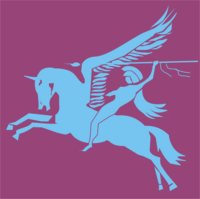156th Parachute Battalion (United Kingdom)
| 151st Parachute Battalion 156th Parachute Battalion |
|
|---|---|

Cap badge of the Parachute Regiment.
|
|
| Active | 1941–1944 |
| Country |
|
| Branch |
|
| Type | Infantry |
| Role | Airborne |
| Size | Battalion |
| Part of |
50th Indian Parachute Brigade 4th Parachute Brigade |
| Nickname(s) | Red Devils |
| Commanders | |
| Notable commanders |
M. C. R. Hose Sir Richard de B. Des Voeux |
| Insignia | |
| The emblem of the Second World War British Airborne Forces, Bellerophon riding the flying horse Pegasus |  |
The 156th Parachute Battalion was an airborne infantry battalion of the Parachute Regiment raised by the British Army during the Second World War.
The battalion was formed in 1941 from volunteers in serving India initially numbered the 151st Parachute Battalion and assigned to the 50th Indian Parachute Brigade. It was then decided they were no longer required in India, so the battalion was renumbered the 156th Parachute Battalion and moved to the Middle East to join the 4th Parachute Brigade, 1st Airborne Division.
The battalion fought briefly in the Allied invasion of Italy in September 1943 and a year later in the Battle of Arnhem, part of Operation Market Garden, where heavy casualties resulted in the disbanding of the battalion, the few surviving men being distributed amongst the battalions of the 1st Parachute Brigade.
Impressed by the success of German airborne operations, during the Battle of France, the British Prime Minister, Winston Churchill, directed the War Office to investigate the possibility of creating a corps of 5,000 parachute troops. On 22 June 1940, No. 2 Commando was turned over to parachute duties and on 21 November, re-designated the 11th Special Air Service Battalion, with a parachute and glider wing.
...
Wikipedia
